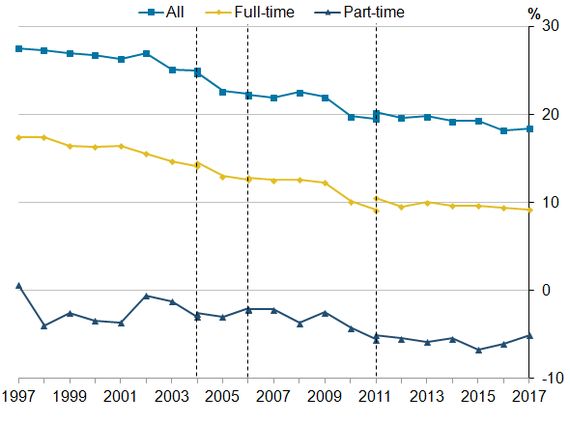Equal Pay Day, on 10 November, marks the date from which women in the UK effectively work for free because of the gender pay gap.
It is shameful that almost 50 years after the Equal Pay Act some women are still paid less than their male colleagues doing the same or like-for-like work.
Prospect's new video demonstrates that being part of the union is the most effective way to combat pay discrimination, including the recent landmark equal pay deal at the Met Office.
But the gender pay gap persists for many reasons, including male domination in some job roles, typically in higher-paid sectors. For example, although women account for half of the UK workforce, they make up only 21% of employees in the science, technology and engineering sectors that are so important for Prospect members, while fewer than 1-in-5 women are in high-skill professional STEM roles.
Women also still shoulder a bigger share of caring responsibilities, often moving into part-time work to accommodate this. One of the clearest calls we hear from members is for more positive flexibility in working patterns, including for men who increasingly want to play a bigger part in family life.
Over the last two decades the gender pay gap has been gradually narrowing, but in the past five years or so, progress has stalled and this year the overall gender pay gap started to widen again.
The latest data from the Office of National Statistics shows that at the median women earn 18.4% less per hour than their male counterparts, up from 18.1% in 2016.
If we only count full-time workers, the figures are a bit better. The 2017 gap is 9.1%, down from 9.4% last year, but still a much slower rate of progress than in the past, as shown in the table.

The aftermath of the financial crisis and years of punishing austerity have no doubt played a role. Overall, women are more likely to work in the public sector than men, so the 1% pay cap has probably undermined efforts to tackle gender pay equality since 2010.
Furthermore, averages can conceal important detail. Significant pay gaps do exist in full-time, white collar jobs - ranging, for example, from 4.5% for biologists and 5.9% for electrical engineers to 23.5% for chemical scientists and 28.3% for conservationists.
New equality regulations
Earlier this year new regulations came into force arising from the Equality Act 2010. These require employers and organisations with more than 250 employees to report annually on their gender pay gap. This is intended to help shed light on pay inequality and to help press employers to take action.
Prospect has criticised the weakness of these regulations but they are a good opportunity to open up a more rigorous discussion about the gender pay gap and the general fairness of the organisations' pay practices. However, publishing the data should not be an end in itself.
Disappointingly fewer than 200 companies and organisations have published gender pay gap data so far. Among Prospect's membership areas, it is encouraging to see that the Office for Nuclear Regulation has published more than the minimum information required, which certainly helps to identify likely causes of the gender pay gap and can start a conversation about what action is needed.
In times like these, when pressures on pay are unrelenting and the economic outlook is uncertain, we need to get better at using equality regulations more innovatively. Larger employers have no option but to comply and it will do them no favours to wait until they are up against next April's deadline.
Prospect represents over 140,000 workers and fights for better terms and conditions for all its members including closing the gender pay gap. Find out more on the Prospect website.
